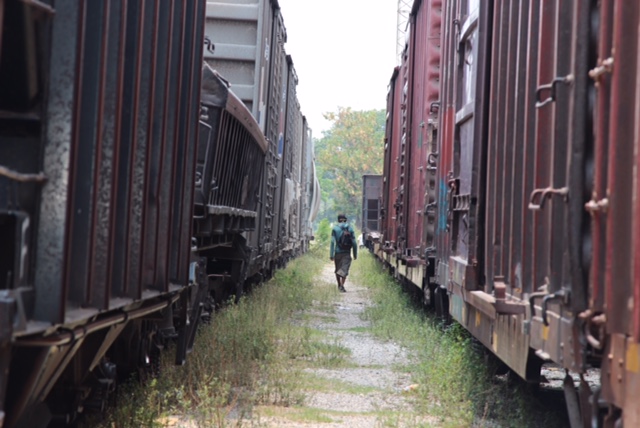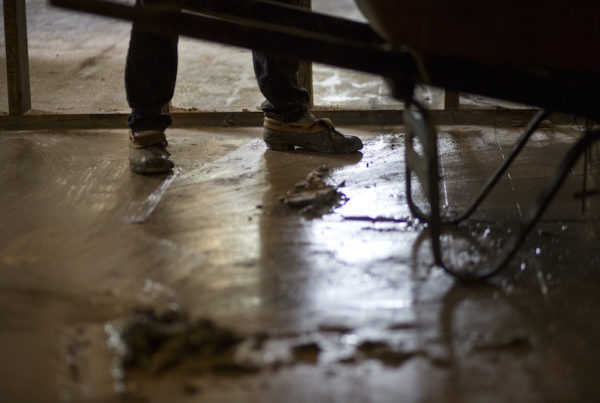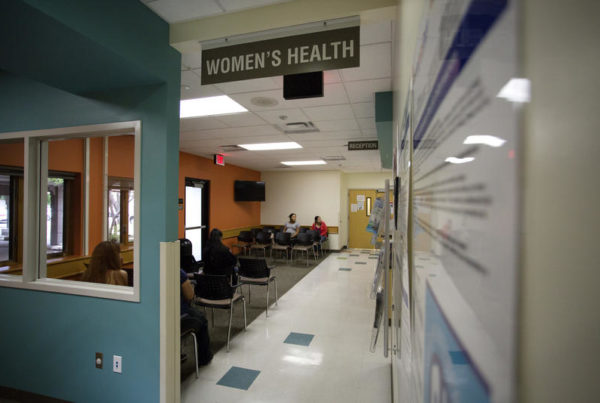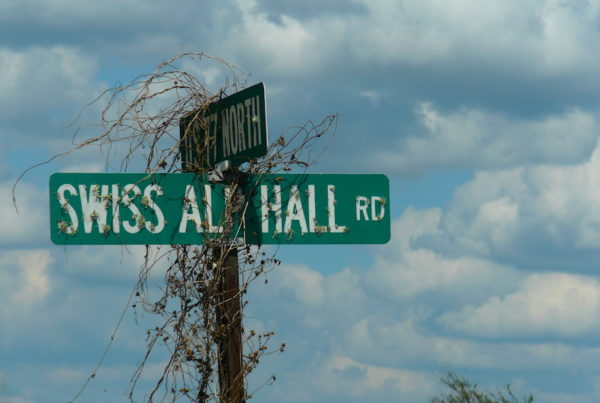From Fronteras Desk:
In 2012, a senior official in the Dep’t of Homeland Security declared that Mexico’s southern border with Guatemala was now essentially the southern border of the U.S.
That was two years before the child migrant crisis that saw tens of thousands of unaccompanied children from Central America crossing or attempting to cross into the US from Mexico. Since then, the US has expanded its own border enforcement efforts by assisting Mexico on its southern border. In 2015, fewer Central Americans reached the U.S., though the numbers undulate from season to season.
This border is porous even after the U.S. pressured Mexico to start Programa Frontera Sur—its southern border plan—in July 2014.The plan was crafted after President Obama said the unprecedented numbers of unaccompanied children and families seeking refugee status at the U.S. border constituted an “urgent humanitarian situation.” The United Nations High Commissioner for Refugees later warned of a “looming humantiarian crisis in the Americas.”
Starting July 2014, Mexico sent at least 300 immigration agents from other parts of Mexico to the south, raided trains and migrant hostels and set up mobile checkpoints in the Mexican interior. Washington is supporting this crackdown with training, technology and intelligence.
I came across a Nicaraguan migrant, Brian Chacón, in the southern Mexican border town of Tapachula, Chiapas, at a food stall that serves a Salvadoran specialty, the pupusa, a corn tortilla filled with a combination of beans, meat or cheese. The place is is popular with Central American migrants. When Chacón entered, he proceeded to start asking diners for spare change to continue his journey north.
“We are migrants from Nicaragua,” he announced softly in Spanish, addressing about a dozen people. He said that he was headed to the United States specifically to try and join relatives in Los Angeles.
Outside the diner, he said he was fearful he’d be caught at the multiple fixed and mobile checkpoints that are currently strewn across southern Mexico. “They (Mexican police and immigration agents) look for us more than anything else because we are a trophy catch for them,” he said in Spanish.
“They’re hunting us,” he said. Deportations of Central Americans from Mexico rose by nearly 70 percent in the first 13 months of the plan. Some believe that number comes at the expense of human rights.
“U.S. involvement in the southern border of Mexico is worrying precisely because of how hidden it is, not just in terms of what the U.S, is doing but what Mexican authorities are doing with U.S. support,” said Clara Long with Human Rights Watch in San Francisco (see HRW’s Mexico Report here). Long researches immigration and border policy. Prior to joining HRW, she was a Teaching Fellow at Stanford Law School’s International Human Rights and Conflict Resolution Clinic.
Neither government talks openly about their work in southern Mexico. Repeated attempts to speak officially with both the U.S. Dep’t of Homeland Security and Mexico’s National Migration Institute, known by its Spanish acronym as INAMI, led nowhere. INAMI in Mexico City returned phone calls and emails, each time pledging to set up an interview, but in the end to no avail. DHS did not respond.
Adam Isacson is a security and border policy analyst at the Washington Office on Latin America, (WOLA), a leading research group focused on the Americas. (see WOLA’s Mexico Report here). Isacson monitors security trends in the hemisphere. He explained why neither government wants to speak on the record.
“There’s sensitivity about anything that looks like the gringos coming down and telling them what to do,” he said, explaining that the U.S. does not want to go public about a campaign that the host country has no desire to talk about.
He explained the genesis of Mexico’s southern border offensive.
“It’s a Mexican plan that was certainly drawn up with a lot of U.S. influence because when you had this flood of children coming in 2014,” said Isacson. “U.S. diplomats were very clear in their statements and their interactions with the Mexicans, ‘please help us do something about this.’
Here are two examples compiled by WOLA.
In March 2015, Rep. Kay Granger (R-TX), Chairwoman of the State, Foreign Operations and Related Programs Subcommittee of the House Appropriations Committee, stated in a budget hearing that, “Our neighbor, Mexico is on the front lines of combating the illegal migration issue and we must do all we can to help Mexico strengthen its borders.”
Asked in March 2015 how he would spend an additional dollar, Adm. William Gortney, the head of the U.S. military’s Northern Command, said, “I think my dollar would be better spent partnering with Mexico so we can help assist them to shore up their southern border so it’s less of a challenge up on our border.”
Washington has committed at least $100 million to support Mexico’s southern border program since 2014. As of February 2016, $20 million has been delivered. And some who work the border are quite happy with the help they are getting.
We spoke with a Mexican immigration agent who agreed to discuss the matter, but only were her identity not revealed. She feared retribution from superiors. She showed her credentials, was in uniform, and arrived with a trusted go-between.
“I’ve seen U.S. Customs and Border Protection officers here,’ she said in Spanish. She said CBP agents work regularly inside a migrant detention center near the border known as Siglo 21, (21st Century) one of the larger migrant detention centers in Latin America.
“Our border is easy to cross,” she explained, citing the geography of the region–a meandering river, the Rio Suchiate that marks a large part of the Mexico-Guatemala border, mountains and forests.
“U.S. agents come to interview migrants we catch,’ after they’ve crossed the border, she said.
“They (U.S. agents) can identify people we’ve deported before, that’s been crucial,” she continued. She explained that the U.S. is helping to collect data on migrants and migrant flows through improved fingerprinting techniques. She also said that U.S. technology is more advanced than the tools currently at Mexico’s disposal.
“That has really helped INAMI,” the agent said.
Yet that support coincides with mounting allegations against some of her colleagues. Mexico’s human rights commission says complaints of extortion and violence by immigration agents rose by 52 percent in year one of Programa Frontera Sur.
Human rights worker Diego Lorente is one of the few people not in law enforcement allowed into the detention center. He also said he’s also has seen U.S. personnel inside the detention center. He recently encountered what Mexican agents said was a member of the U.S. Embassy’s staff inside the detention center.
Lorente said he asked the American directly if he could speak with him. Lorente described the response he received.
“He made this sign with his finger,” Lorente recounted, drawing his index finger across his lips, indicating the American was not disposed to speak with him.
Citing the latest statistics, Lorente said U.S. work helping Mexico on its southern border complicates an already chaotic environment for migrants. “They are suffering much more now than they have in the last two or three years,” he said.
If migrants do make past the border, into the interior of Mexico, they face numerous checkpoints, staffed by an alphabet soup of Mexican law enforcement agencies – immigration, police, the army. Yet thousands of migrants appear undeterred. Across the southern border region, you see groups of them in shelters, in buses and on the roads. Despite the dangers, Mexico’s remains a trampoline to the US.
And if there is one southern Mexican town that personifies that, it is Arriaga, Chiapas. It is located three hours and 11 checkpoints north of the Guatemala border and it’s a former hub of trains known collectively as La Bestia, the beast.
But now, the train only comes here to bring work crews who are repairing tracks. Hordes of migrants who once lined the tracks have been replaced by police and INAMI agents. They circle the town in truck after months of raids, pulling migrants off trains and erecting concrete walls with barbed wire near the tracks to prevent access. Yet migrants still show up here, though in far fewer numbers.
Today, Arriaga is still a first or second stop on the trek north. Guatemala and El Salvador have consulates in Arriaga. But now, many migrants leave Arriaga on foot instead of on the train.
50-year-old Alex Morales said he’d been deported from Boston to Guatemala three months ago after living for 20 years in New England. “It’s very hostile and dangerous,” he said inside the Casa de Migrantes, the migrant shelter in Arriaga, referring to Mexico’s pressure on the southern border.” It’s no easy way for the immigrant,” he said.
He was hunkered down in Arriaga after walking the better part of 200 miles inland to avoid checkpoints. The checkpoints, mobile and fixed, are a major component of Mexico’s border offensive. U.S. funds have paid for some of the checkpoints. Morales says they are working. “It’s hard for the immigrant people to cross Mexico. It’s no easy way.”
Police officer Gisella Claribel patrols the tracks in Arriaga these days, but she said the only migrants she’s looking for these days are those sleeping under decommissioned rail cars near the now barely used station. “A lot more checkpoints have been put in and around Arriaga,” she said in Spanish. Beads of sweat poured down her face and she squinted in the harsh sunlight, always looking over her shoulder. She defended the campaign of raids on the trains, saying assaults and murder are commonplace on them. “Mexico is concerned about migrants welfare,” she said.
The U.S. government is supporting the crackdown with technology and training, part of an operation that Mexico says is establishing order. Others say chaos.
22-year-old Salvadoran Miguel Angel Ochoa was crouched under under a railcar, plotting his next move north from Arriaga after enduring bwhat he said harrowing journey from the border with Guatemala to Arriaga.
He described a situation that mirrored Morales’ experience. But there was one difference. Ochoa said Mexican immigration agents aren’t the problem, it’s Mexican federal police, los federales.
“If you don’t pay them, they hand you over to immigration,” he alleged. He said he knows that because he didn’t pay on a previous attempt to transit Mexico. He wanted to, but had no money. He was arrested, deported to El Salvador and said he was now trying again to get to the U.S. He said he was determined to return to the U.S., that he had a wife and U.S.-born infant daughter in Arkansas.
The United Nations High Commissioner for Refugees (UNHCR) has a field office near the Guatemalan border, in Tapachula, Chiapas. That office is dealing with streams of asylum seekers right now. In April 2016, UNHCR issued a call for urgent action to deal with growing numbers of Central Americans trying to gain asylum status. Speaking of the migrants, Perrine Leclerc, who heads the UNHCR office in Tapachula said, “They walk for days, they walk during the night.”
Mexico granted refugee status in approximately 21 percent of requests in 2014 and the first seven months of 2015,
“Our main concern is to make sure that those who are in need of international protection have access to the asylum system in Mexico,” Leclerc continued.
Leclerc says virtually all migrants express variations on the same theme; organized crime, poverty, and weak social institutions — these outweigh the risk of heading north. She believes the migrant trail today is frayed.
“It’s more dangerous because people are more invisible. They are outside of the network, the humanitarian network. And it makes them much more vulnerable to extortion, to violence, along the way,” Leclerc said.
Behind her, in a shielded room, migrants with bitter stories of life in their home countries–principally El Salvador, Guatemala and Honduras, called the Northern Triangle of Central America–were being interviewed by UNHCR staff who are working overtime right now to help guide migrants through Mexico’s asylum process.
Mexican law says migrants can request asylum. And immigration agents are supposed to inform migrants that they arrest about their right to pursue asylum status. But migrants interviewed for this story, aside from those the UNHCR are assisting, said they were unaware that option existed.
The U.S hasn’t spent close to all the money it pledged in 2014 to help Mexico in the south. Some analysts suggest it is because the U.S. has to choose its partners within Mexican law enforcement very carefully.
Maureen Meyer is an analyst at the Washington Office on Latin America. She says Mexico is basically stopping migrants for the U.S.
“We have met with (Chiapas) state police who also talk about getting about U.S. assistance,” Meyer explained. She said working with Mexican law enforcement implies inherent risk. There are no human rights certifications attached to U.S. assistance in southern Mexico.
“If you have a country like Mexico that has a history of abuse against migrants and human rights violations, you’re certainly giving more opportunity for that to happen to migrants,” she said.
We spoke with Duncan Wood, director of the Mexico Institute at the Woodrow Wilson International Center for Scholars in Washington DC. Wood said that for the first time, Mexico is inching toward at least a semblance of order in the south. But he also expressed concerns.
“If Plan Frontera Sur is going to overcome the considerable public relations challenges that it faces, we actually have to provide proof that this is protecting Central American migrants,” Wood said, “not just turning them back at the border or when they get to certain interior points within Mexico.”
In December 2015, the U.S. Congress approved $750 million for social and economic development in Central America, a near tripling of assistance over the previous year, the rationale being that helping weak nations develop internally may be a better key to immigration control than more boots on the ground to detain them.
















